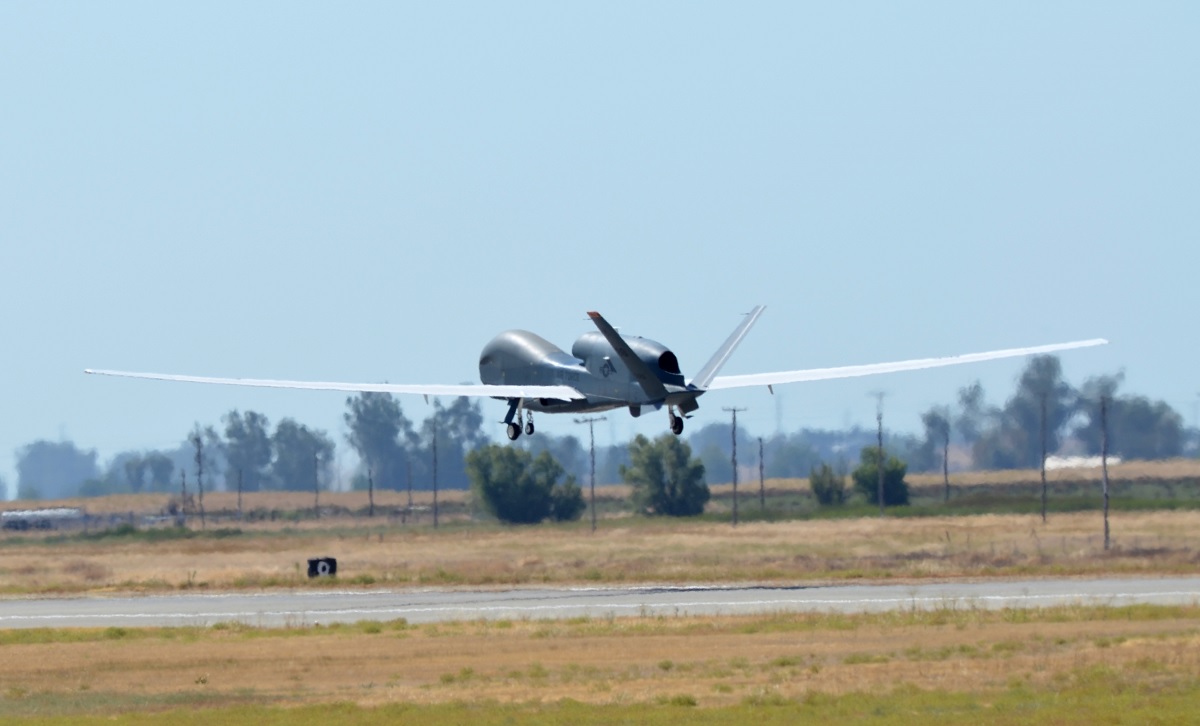Approximately 400 miles off the coast of California, the RQ-4 was when the situation deemed an emergency
Being separated from your aircraft by hundreds or even thousands of miles is an experience that is exclusive to the remotely piloted aircraft community, as Staff Sgt. Jeffrey Schultze of the 9th Reconnaissance Wing Public Affairs explains in his piece RQ-4 pilots act decisively to save aircraft. Two RQ-4 Global Hawk pilots employed a unique set of talents in August 2016 to overcome a problem that occurred while they were in the air. Together, they overcame a potentially disastrous oil system failure in the Global Hawk to salvage an aircraft.
Capt. Thomas, an RQ-4 pilot with the 12th Reconnaissance Squadron, and Capt. Travis, a wing scheduler with the 9th Operational Support Squadron, took decisive action and applied their significant experience to rescue the $130 million aircraft.
The RQ-4 Global Hawk is the high-altitude, long-endurance, remotely piloted aircraft used by the United States Air Force for ISR. From the Mission Control Element (MCE) on the ground, the pilots fly the aircraft.
“About six hours into our mission it became clear there was a fault in the oil system, at that point, we went straight into the checklists and utilized our training to access the situation,” said Thomas.
“During the experience, I learned I knew a lot more about the aircraft system than I had ever realized,” said Thomas. “When we went through the checklist, I began to see that from my training I had a real systemic understanding of why the malfunction was occurring, and that enabled me to anticipate what could occur next.”
As Thomas was getting close to his required crew rest period and had to turn the malfunctioning plane over to Travis so he could complete the flight, the already difficult situation became much more tense.

The RQ-4 was about 400 miles off the coast of California when the situation was deemed an emergency, and it was decided to try to return the aircraft to Beale Air Force Base (AFB). Travis remembers what it was like to take control for the final two hours of the flight from Thomas.
“At first when I took over, I was aware of a generator issue. The situation didn’t seem too severe, but shortly after we discovered the oil system fault. That pushed the situation into a much more severe category,” he said “Capt. Thomas was still there at that point so we both reacted immediately and I began going into the checklists.”
A decision on whether the aircraft could actually return to Beale AFB or another nearby location has to be made quickly.
“I wanted to try my best to get the aircraft back safely, the engine was still running and I continued to monitor the oil system levels. The big consideration was the safety of people on the ground as we got closer to the coast,” Travis said. “Considering all the factors in play, working toward the right decision made for a challenging situation.”
The aircraft safely diverted to Edwards AFB, California, due to the in-flight emergency. Travis recalled the feeling of the RQ-4’s successful landing.
“It was a really good feeling when it touched down at Edwards, I was just glad it made it and I played my part.”

Photo: Airman 1st Class David Tracy and Staff Sgt. Bobby Cummings / U.S. Air Force

